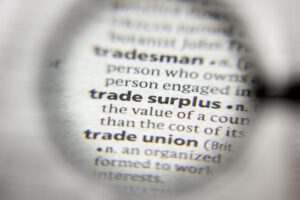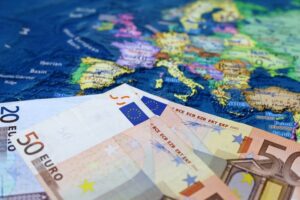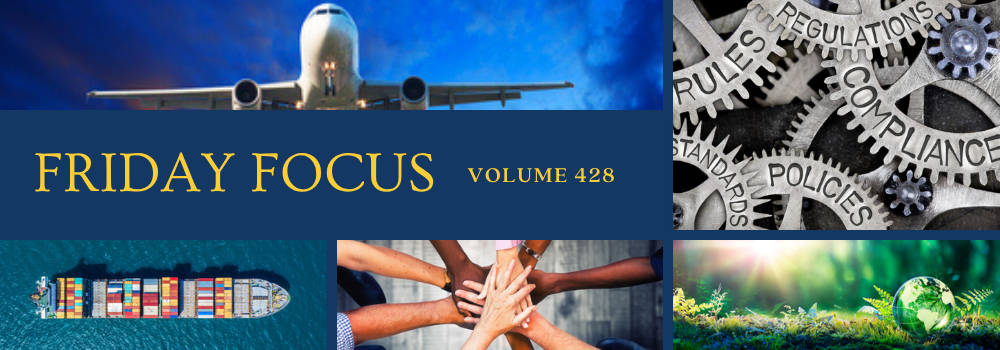A Reverse Perspective on Trade and Tariffs

It isn’t every day that a nerdy gal like me relates to a jetset racecar driver, but IndyCar star Pato O’Ward was a man of the people this week. With Tuesday’s Indy 500 practice paused for a rain delay, the big story was … wait for it … his sitting on hold with an international shipping carrier for an hour on live TV trying to pay an unexpected customs bill on his race helmets, newly subject to US tariffs. It is a headache many folks and I have had this spring, contributing to broad economic uncertainty and risk aversion, all because US politicians wrongly see the trade deficit as a problem. Here is the funny thing: Those nations with big trade surpluses? They envy trade-deficit nations. Whatever side a country is on, the grass seems always greener on the other.
Consider China, which has purportedly eaten the US’s lunch while cleaning its clock since joining the World Trade Organization in 2001. Its trade surplus in 2024 was nearly $1 trillion, which by more than a few US politicians’ logic, should make it a pillar of economic strength and hoarder of capital siphoned from the US.
But consider it from China’s perspective, and you will see radically different viewpoints. There, the trade surplus represents not industrial might, but industrial overcapacity, fueled by decades of misdirected investment. Economists see an over-reliance on external demand because consumers don’t have enough firepower to buy what local factories produce. They see a government trying to preserve fast economic growth by funneling capital to heavy industry to spur exports instead of fostering sufficient development in domestic services and consumption. Adding to pain, they see an artificially weak currency, aimed at making exports more competitive overseas, that makes life more expensive for domestic folks. To them, an economy that produces more than it consumes is a burden, not a blessing. There is a reason China’s government spent much of the 2010s shuttering blast furnaces to curb steel production.
China’s big trade surplus brings another particularly annoying side effect: capital controls. Money can’t flow freely in or out. And the trade surplus is a big reason why. One, a managed currency is incompatible with free-moving capital. And two, always and everywhere, a trade surplus is a financial account deficit. Meaning, when you have more goods flowing out of your country than are flowing in, it means you also have more money flowing out of your country than flows in. Because China’s trade flows hemorrhage money out naturally, the government micromanages the capital account.
Read the Full Insight Here
05/15/2025 | Elisabeth Dellinger | Fisher Investments
The Myth of the Single Market

The IMF puts the hidden cost of trading goods inside the EU at the equivalent of a 45% tariff. For services the figure climbs to 110%, higher than Trump’s “Liberation day” tariffs on Chinese imports—measures many saw as a near-embargo.
These barriers are not direct taxes. Instead, a construction company might find its building materials or plans, though EU-compliant, still need costly national checks. A foreign university looking to set up a campus, or a care home provider wanting to expand, could face major delays getting their staff’s qualifications accepted or dealing with complex local licensing for their buildings.
According to the IMF, since the mid-90s, trade costs for goods dropped 16% for non-EU imports, but only 11% for trade within the EU. As a result, actual trade between EU countries is less than half that between US states. Because growing at home is so hard, EU firms must often look beyond the Union. Today, the EU’s internal and external services trade are roughly the same size as a share of our economy. In a true single market, internal trade should be much larger. In a world where scale is ever more vital (services include such scale-intensive business as AI, finance, IT) this fragmentation of the single market is very damaging.
What is the structural problem causing this fragmentation? The Single Market we all thought we have is largely a myth.
Mutual recognition fails in practice.
The EU directives do not harmonize EU legislation.
The EU Commission is not doing its job in enforcing the Single Market.
Read the Full Article Here
05/14/2025 | Luis Garicano | Silicon Continent
Notes from History for Surviving the Trade War

Trade Wars Are Harmful and Trade Negotiations Are Hard-Fought
Trade wars rattle markets, raise prices, increase unemployment, weaken supply chains, prompt nationalist sentiment, and strain foreign relations, including those between longstanding allies. People suffer in a trade war.
This was exactly the logic behind the creation of the current international trade system, which emerged after World War II. The victorious countries in the war set up an organization to lower tariffs and increase world trade: the General Agreement on Tariffs and Trade. That agreement was established because experts, officials, and politicians around the world — including in the United States — believed that the Great Depression of the 1930s had been one of the main causes of World War II. According to Harry Hawkins, one of the leading economic planners in the U.S. State Department in the 1940s, “Nations which are economic enemies are not likely to remain political friends for long.” Its mandate reflected the logic of doux commerce: Increasing the volume of world trade and deepening interdependency among nations would make the world less likely to go to war again.
But the trade liberalization process was never gentle. Despite repeated assertions that international trade made the world more peaceful, trade negotiations were, and continue to be, combative and selfish. The General Agreement on Tariffs and Trade organized eight rounds of trade negotiations between 1947 and 1994. In every single one, national negotiators asked for much and grudgingly made concessions in return. Negotiations included accusations of bad conduct, walkouts, and deadlocks. The hard-nosed behind-the-scenes politics of trade negotiations were papered over in upbeat statements at the end of rounds.
Don’t be fooled.
Agreement to lower tariffs, and later to remove or minimize other kinds of barriers to trade, involved zero-sum horse trading as each national delegation was determined to bring home a good deal for their people. This did not mean the General Agreement on Tariffs and Trade wasn’t working well. The point of the organization was not to make the process of liberalizing trade peaceful. Rather, haggling over tariff rates and access to foreign markets was the preferred way to compete, infinitely better than going to war.
Read the Full Commentary Here
06/05/2025 | Francine McKenzie | War on the Rocks
WITA – We put the community in trade community.
Information about upcoming WITA and trade community events


